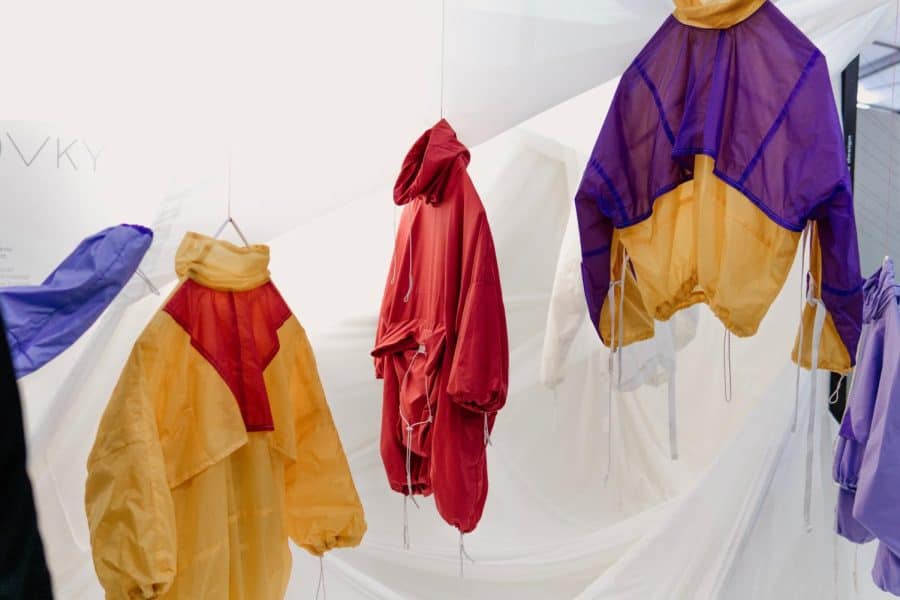Sustainable fashion doesn’t have to be complicated
January 30, 2022
Fast fashion companies are on the rise among college students for their inexpensive, easily accessible products. However, these companies’ unethical practices raise questions as to whether there’s a better way to shop.
Perhaps the most well-known fast fashion retailer, Shein, an online clothing store that boasts trendy pieces at incredibly low prices, has recently seen a large increase in popularity. According to The Business of Fashion, spending at Shein skyrocketed 477% in the 2021 holiday season compared to two years prior.
An article by the BBC revealed that, in order to maintain Shein’s rapid inventory turnaround, employees in Guangzhou, a city in the Guangdong province of China, were found to be working 75-hour weeks. This is a violation of local labor laws in China, which call for a maximum of 40 hours per week of work.
Beyond that, the low prices on Shein clothing and other fast fashion brands come with a sacrifice in quality. This means that these clothes are frequently disposed of, either filling up landfills or, as any Tuscaloosa shopper will attest, thrift stores.
Rebecca Burney, an adjunct professor in the UA textiles and design department, said the desire for quick, inexpensive clothing is uniquely American, whereas European markets are more geared toward higher-quality, luxury couture.
“We want it fast. We want it on sale. We want it cheaply. That’s not really a European mentality, so I think it’s really just America that is sort of programmed to be in that mindset,” Burney said.
Prior to her transition to teaching at the University this semester, Burney worked in the New York fashion industry as a pattern maker. There, she found that even people knowledgeable about the fashion industry engaged with fast fashion.
“I know plenty of people who worked in the fashion industry with me who would go down the street to Zara and buy things,” she said. “I did too. It was available, it was right there.”
A trip to Plato’s Closet or Goodwill in Tuscaloosa will confirm that these fashion professionals share their affinity for cheap clothing with local college students. However, fashion students at The University of Alabama attest that shopping sustainably isn’t as difficult as it might seem, and that cutting out fast fashion completely might be an unrealistic goal.
Anaya McCullum, a senior majoring in apparel design and the president of the Student Fashion Association, said buying excessive clothing is the first problem to conquer.
“I feel like it’s less about the fast fashion itself and more about the overconsumption of it. You have the YouTubers who do these clothing hauls of $1,000 worth of Fashion Nova to only wear once. We shouldn’t be overbuying these clothes that obviously aren’t good for the environment,” McCullum said.
From the sorority culture of buying a new outfit for every event to the rapidly shifting definition of what’s “trendy” in fashion, it only takes a quick look around any thrift store to confirm that these clothing binges aren’t necessary or fulfilling long-term.
“We just don’t need as much as we think we do. There’s seven days in a week. How many things do you need,” Burney said.
Burney also advised not to discount the power of accessories in adapting to a more limited wardrobe.
“You can really change the look of something a lot just by adding a scarf, jewelry or a hat,” she said.
Morgan Igou is a junior majoring in fashion merchandising and the founder and president of the National Retail Federation Student Association at The University of Alabama, which supports students in their search for careers in the fashion retail industry.
Igou said her career goal is not to seek out a perfectly sustainable company but to encourage change in a workplace that has room for improvement.
“The first step is just acknowledging that they have a problem and that they’re willing to fix it, and that they’re going to do whatever it takes to fix it,” she said. “So that’s kind of No. 1, stepping in and figuring out if they actually care.”
All three women offered advice on how to dress more sustainably on a limited budget.
McCullum said YouTube tutorials on upcycling helped her make the most of her wardrobe.
“They teach you how to turn a button down into a corset or something like that,” McCullum said. “But it doesn’t have to be that elaborate. Honestly, upcycling is as easy as turning an oversized T-shirt into a crop top by getting a pair of scissors and cutting a line across.”
Burney also cited thrifting as a significant move toward sustainability.
“There’s a huge interest in second hand. I think it’s great that clothes can have a new life and younger people are discovering the value of that life and resurrecting it,” she said.
However, not everyone views the Tuscaloosa thrifting scene in such a positive light.
“People are donating their old stuff from Shein and things that have holes in them,” Igou said. “Young people nowadays just resort to donating because they think of it like they’re doing something good for the community if they’re donating. People see it as an act of service even when they’re doing no one a favor.”
Instead, Igou suggested donating old clothes to companies that will transform them into something new.
“One company can turn old socks into yarn. I know a lot of similar places, where you can donate clothes and they’ll turn them into patches, and that way you can use them on your jeans or you can put them on a jacket or a blanket,” she said.
H&M also claims that it will take in unwanted clothing and reuse it, either by directly reselling it or turning it into another material or article of clothing.
One concept that all three women agreed on was that doing research is crucial.
McCullum said although many companies aren’t perfect, some are making a definite effort to move toward a more eco-friendly business model, and that that information is easily accessible on their websites.
“There are companies that are changing over to sustainable fashion, like Levi’s. We need to be more considerate about how we consume,” McCullum said.
To Igou, doing research can be as simple as scrolling through social media feeds.
“Utilizing Instagram and especially TikTok right now, people can easily be exposed if they want,” Igou said. “If they don’t, then they never will, but if they are interested, just doing that tiny bit of research right before you go to bed is going to be the most useful.”
Questions? Email the Culture desk at culture@thecrimsonwhite.com.





















